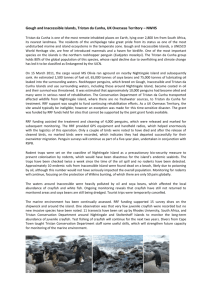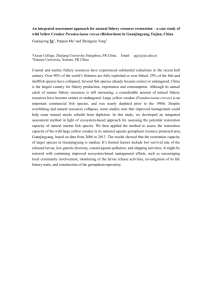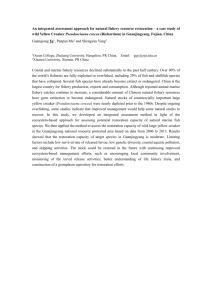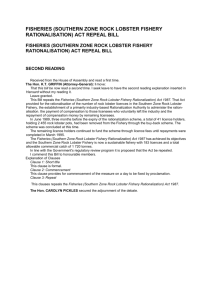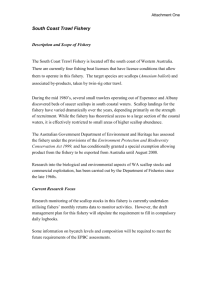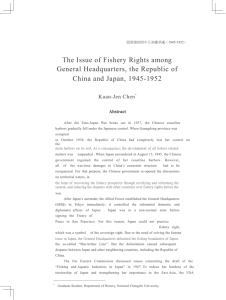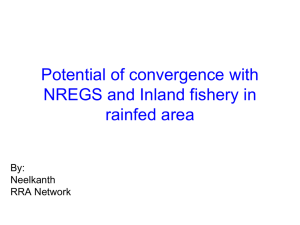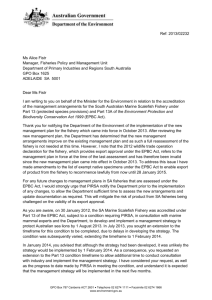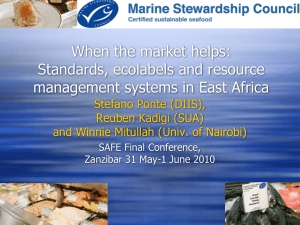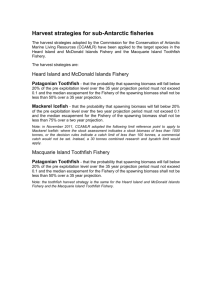HOLLOWAY_Abstract_30_Jul_2012
advertisement
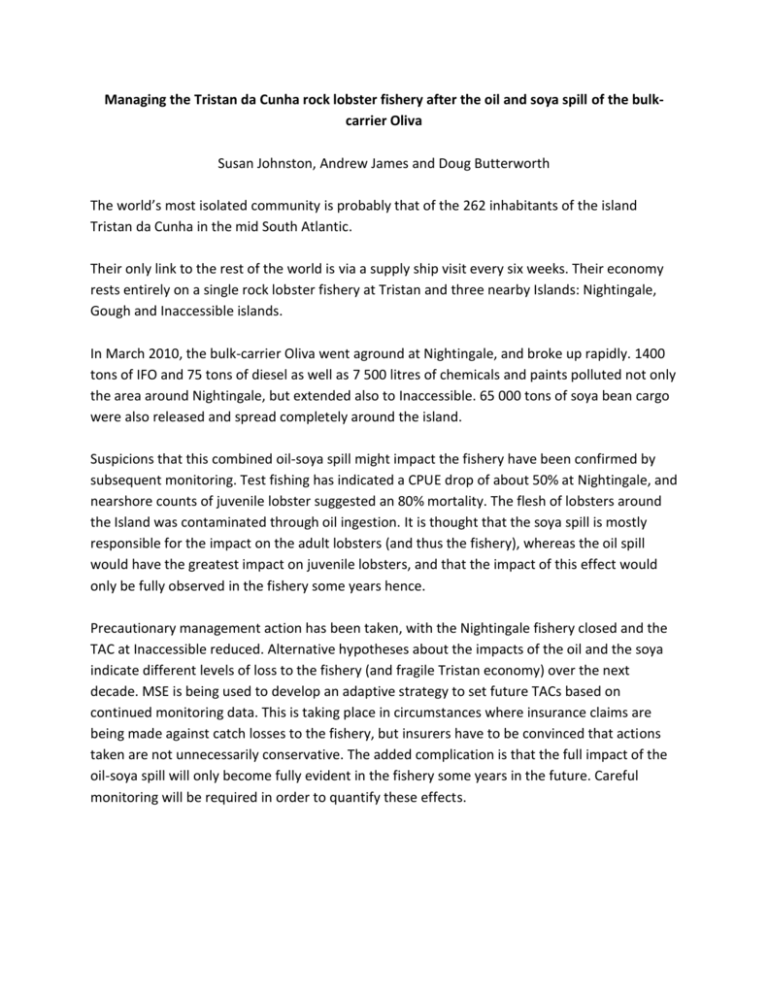
Managing the Tristan da Cunha rock lobster fishery after the oil and soya spill of the bulkcarrier Oliva Susan Johnston, Andrew James and Doug Butterworth The world’s most isolated community is probably that of the 262 inhabitants of the island Tristan da Cunha in the mid South Atlantic. Their only link to the rest of the world is via a supply ship visit every six weeks. Their economy rests entirely on a single rock lobster fishery at Tristan and three nearby Islands: Nightingale, Gough and Inaccessible islands. In March 2010, the bulk-carrier Oliva went aground at Nightingale, and broke up rapidly. 1400 tons of IFO and 75 tons of diesel as well as 7 500 litres of chemicals and paints polluted not only the area around Nightingale, but extended also to Inaccessible. 65 000 tons of soya bean cargo were also released and spread completely around the island. Suspicions that this combined oil-soya spill might impact the fishery have been confirmed by subsequent monitoring. Test fishing has indicated a CPUE drop of about 50% at Nightingale, and nearshore counts of juvenile lobster suggested an 80% mortality. The flesh of lobsters around the Island was contaminated through oil ingestion. It is thought that the soya spill is mostly responsible for the impact on the adult lobsters (and thus the fishery), whereas the oil spill would have the greatest impact on juvenile lobsters, and that the impact of this effect would only be fully observed in the fishery some years hence. Precautionary management action has been taken, with the Nightingale fishery closed and the TAC at Inaccessible reduced. Alternative hypotheses about the impacts of the oil and the soya indicate different levels of loss to the fishery (and fragile Tristan economy) over the next decade. MSE is being used to develop an adaptive strategy to set future TACs based on continued monitoring data. This is taking place in circumstances where insurance claims are being made against catch losses to the fishery, but insurers have to be convinced that actions taken are not unnecessarily conservative. The added complication is that the full impact of the oil-soya spill will only become fully evident in the fishery some years in the future. Careful monitoring will be required in order to quantify these effects.
